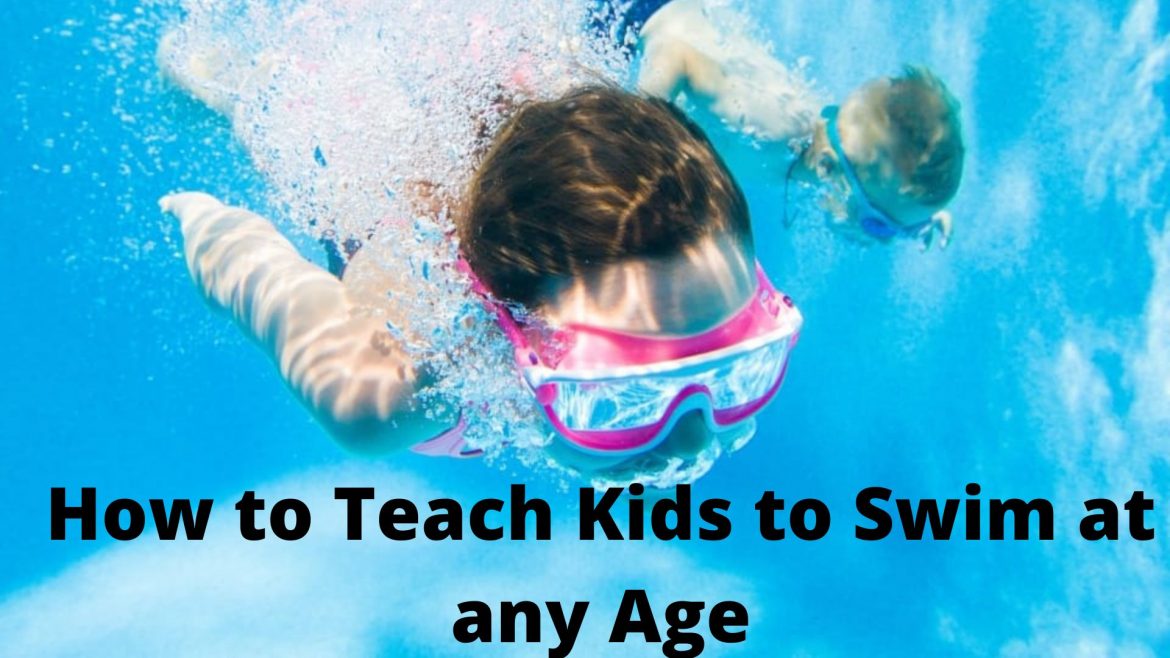How to Teach Kids to Swim at any Age
For a child, learning to swim is a whole new experience. It’s not just about learning water safety basics; also it sets the base of a healthy and active lifestyle.
AAP (American Academy of Pediatrics) recommends professional swimming lessons as a layer of protection from drowning.
And this is the major reason kids swimming lessons in Singapore and around the world are popular. Parents prefer enrolling their kids in professional swimming classes instead of experiencing the drowning risk.
Once you have enrolled your child, now the main concern is how they will learn to swim? Well, to get a better understanding, we have created a guide for teaching swimming to kids of different ages.
Swimming Guidelines for Different Age Children
Table of Contents
Swimming is a different experience for infants, toddlers, and teenage kids. So, below we have created a guideline for teaching it to different age categories.
1. Infants Swimming Lessons (6 months up to 1 year)
Before registering your kid for professional kids swimming lessons, start from your home.
As you know, parents are the first people to teach an infant, so bring a bathtub into the home. Now, use it to make your child comfortable in the water. Pour some water on their head, face, and then over the body, so they will be used to the water. The most important skill a parent should have is patience with the infants. Because infants can’t learn in a day, they will always need help to learn any new thing.
The next step is bringing your child to a professional swimming class. Hold them and let them splash in the water. It will help kids to know the resistance of the water. Also, put your baby on their back and allow them to have a floating feeling.
2. Toddlers Swimming Lessons (1 year up to 3 years)
Toddlers have the capability to understand things by actions. You can teach them to blow bubbles or move their legs in the water. For this, you have to act like one; then, you can make them understand swimming is a fun activity.
After teaching toddlers at home, move forward to the professional swimming class. But one important thing is to keep your eyes on them during their swimming class. It is because most toddlers are curious, which may lead to extremely dangerous situations. Or might create a mishap while learning to swim.
When discussing safety, it includes opting for an indoor swimming pool in Singapore and parents being alert. You might be wondering why indoor pools?
Well, there are many reasons like;
- It protects toddlers from harsh weather conditions.
- These pools are safe because they are covered from all sides.
- They are hygienic and cleaned professionally.
- No need to be concerned about health issues with the open pool water
Once your child is comfortable in the water, you can move ahead with swimming classes. There they will learn to become familiar with floating and use their legs and arms while swimming.
As a parent, be attentive during the class, and if needed, then let them hold the edge of the pool. Mostly, children learn slowly, so have some patience and wait. For improvement, encourage your child and show some excitement.
Obviously, an infant can’t become a professional swimmer in a day. However, you can help them gain more confidence.
3. Older Children Swimming Lessons (4 years to 12 years)
Children from the age of 4 or more can learn faster than toddlers and infants. You can register their name for the swimming institute and bring them to class. The coach will instruct them and tell them about safety around or in the water sources/swimming pool.
One more trick is to give small challenges to your children like;
- Putting face in the pool water
- Jumping to your arms (you must be standing inside the pool)
- Touch the bottom of the swimming pool
These activities will make kids more comfortable underwater. Also, don’t forget to celebrate their achievements (even the small ones) to encourage them.
4. Teens Swimming Lessons (13 years to 19 years)
Once your kid reaches middle school age, they can learn to swim easily.
Well, teenage children are rational; you can show them videos about water safety. Or parents can present the facts to them about the risk of drowning. So, you can directly ask your kid to learn to swim. Tell them some examples, such as;
- How to eliminate the risk of drowning
- Tell them the health benefits of swimming
- Or you can ask your child if they will enjoy swimming.
- Make them understand about careers in the field of swimming.
Pro Tips For Parents
The most important thing is to know your child’s fear.
How?
Below are some important tips to understand your kids’ fear and ways to treat them.
Learn An Important Trick
We have a trick to decrease the fear of water in toddlers or infants. Boil a bucket of water and let it cool till it becomes bearable for kids. Now, gently put some water on your child’s shoulder, hands, and head. It will help them get used to the water and the temperature.
Encourage Safety
If your kid is showing interest in swimming, then encourage them to do better. You can bring goggles, a swimsuit, and other important gear for swimming. Well, a pair of google provides a positive experience in the swimming pool. There are chances that a child will feel secure with all the swimming equipment.
Let Them Play In The Water
If your child wants to play in the water, don’t stop them. It boosts their confidence and makes them get used to being underwater.
So, let them experiment with new things in the swimming pool. But make sure you are alert while they are trying something new. Also, choosing an indoor swimming pool rather than an outdoor one would be better. It will provide safety to kids and assure you of a safe swimming environment.
Also Read: The Different Types of Canopy Tents
Last Words
Swimming is a popular sport that is easy to learn with fun activities. So, enrolling them in kids swimming lessons in Singapore ensures they have a good instructor. The coach should be friendly, patient with children, a great communicator, and equipped with necessary certifications.
Remember, every child is different, and so do their learning capabilities. So, don’t force them to compete with other kids; it may bring down their morale.
We hope this guide has helped you learn how to teach swimming to children in different age groups.
Thank you for reading!




